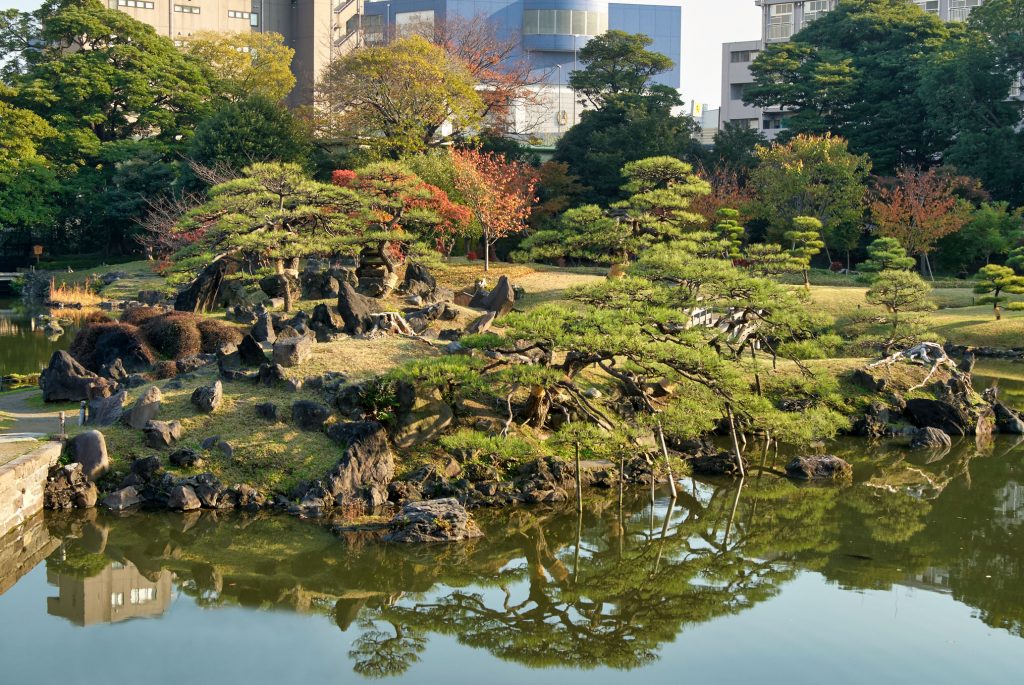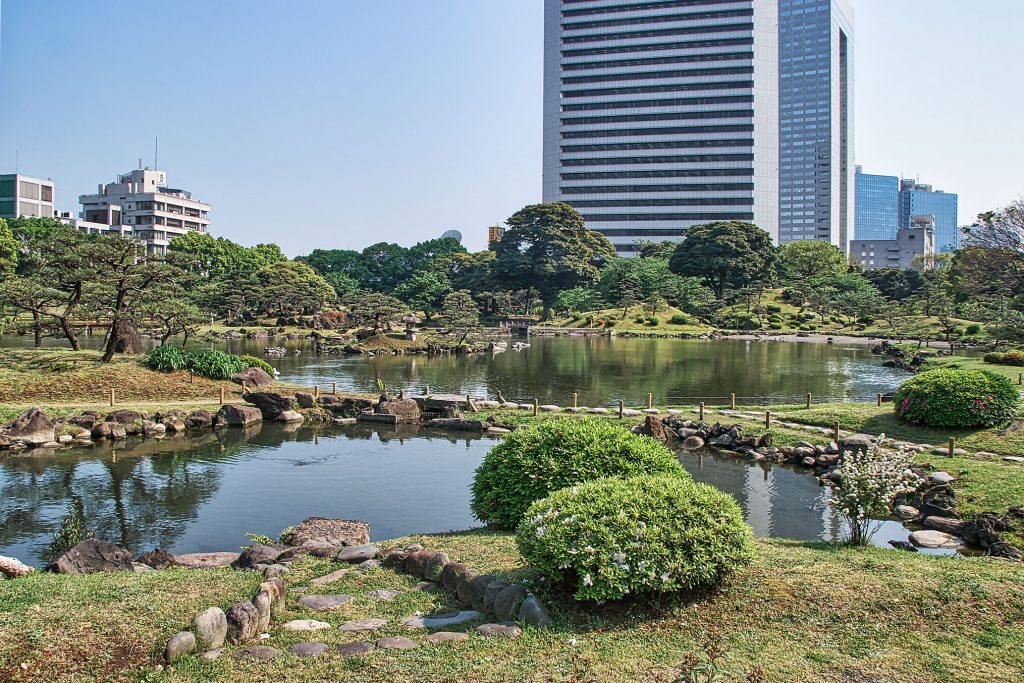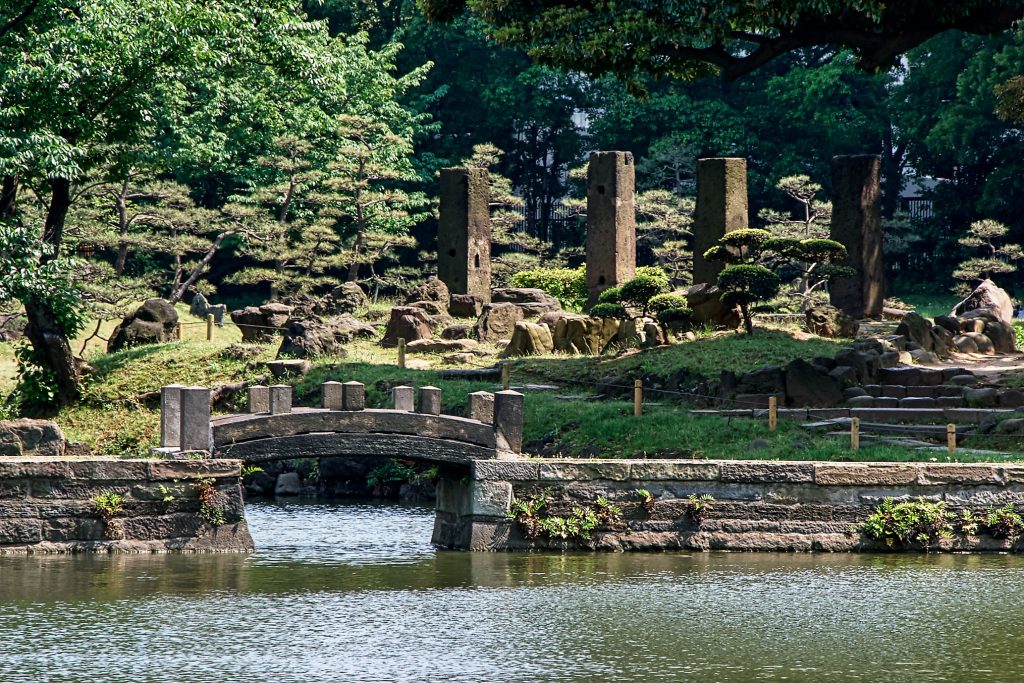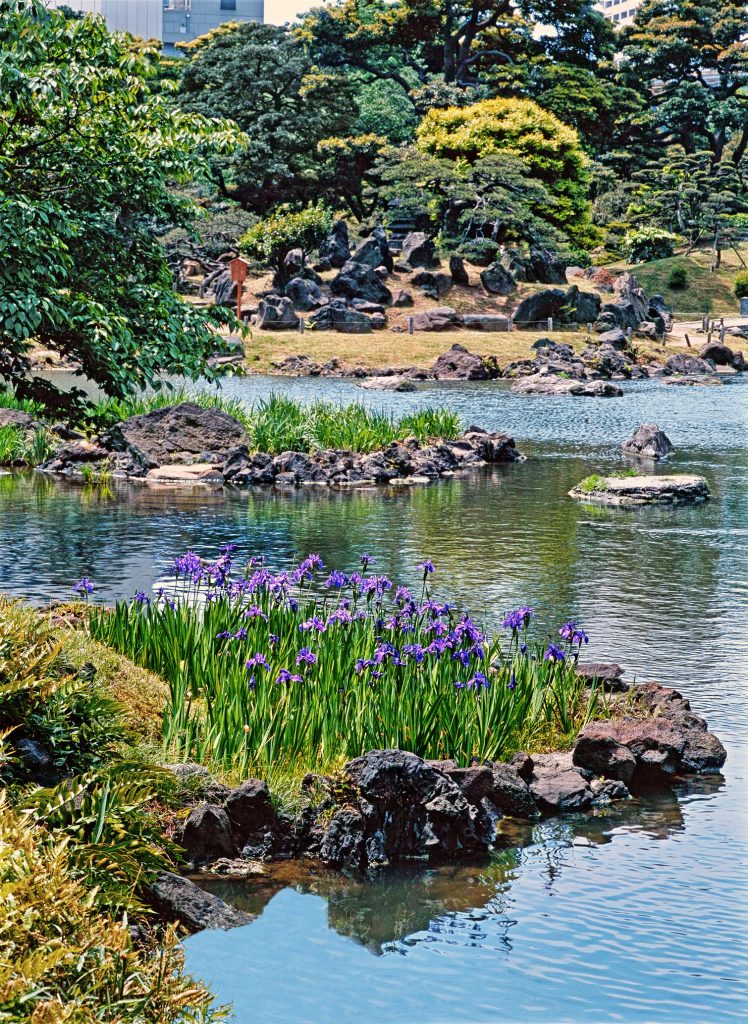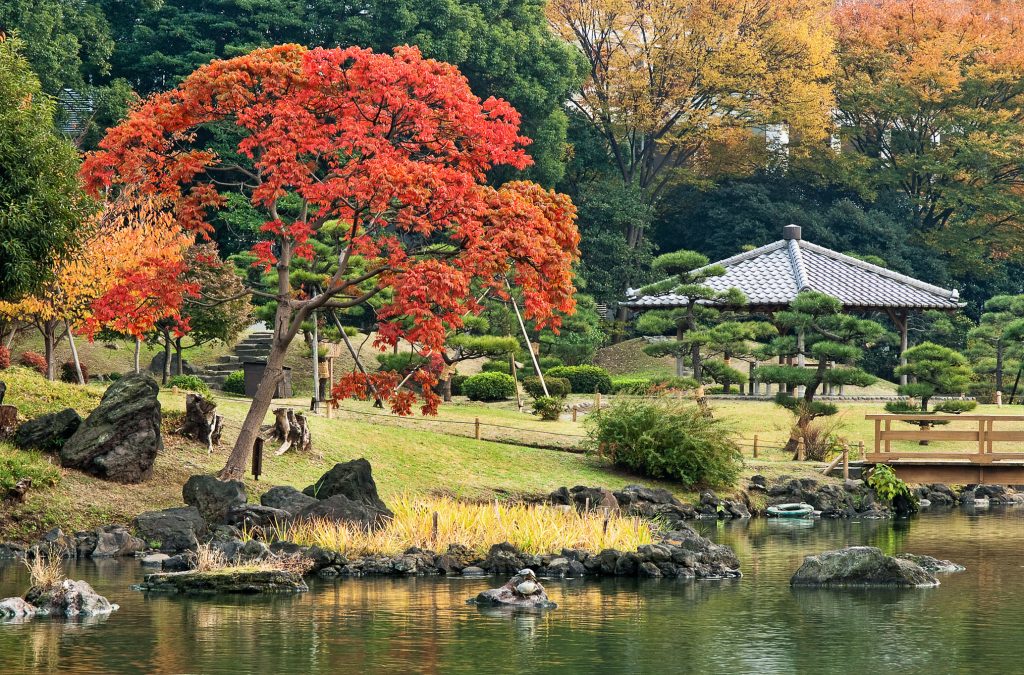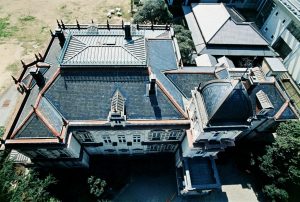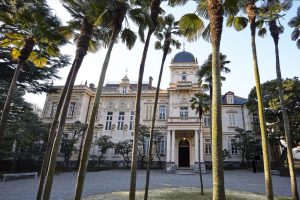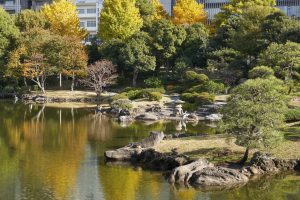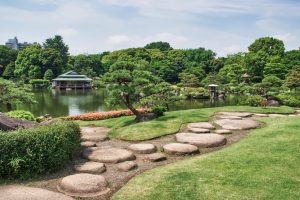The Kyu-Shiba-rikyu Gardens is an urban oasis surrounded by buildings and railways. The land on which the garden is located was originally under the surface of the sea, but in the second half of the 1650s the area was reclaimed and changed owners several times through the ages, until it was granted to the City of Tokyo in 1924, and later opened to the public.
Kyu-Shiba-rikyu is a pond-centered stroll-type garden, the predominant style of the numerous daimyo gardens created during the Edo period. This format combines flat areas and miniature hills arranged around a central pond, thus creating a difference in elevation that gives visitors an opportunity to enjoy the scenery of the central pond from a variety of angles.


